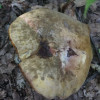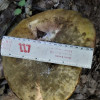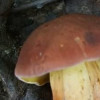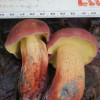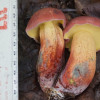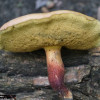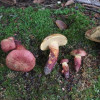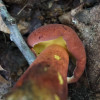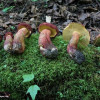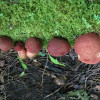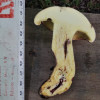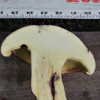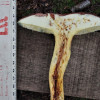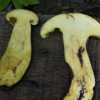Identifying Your Bolete
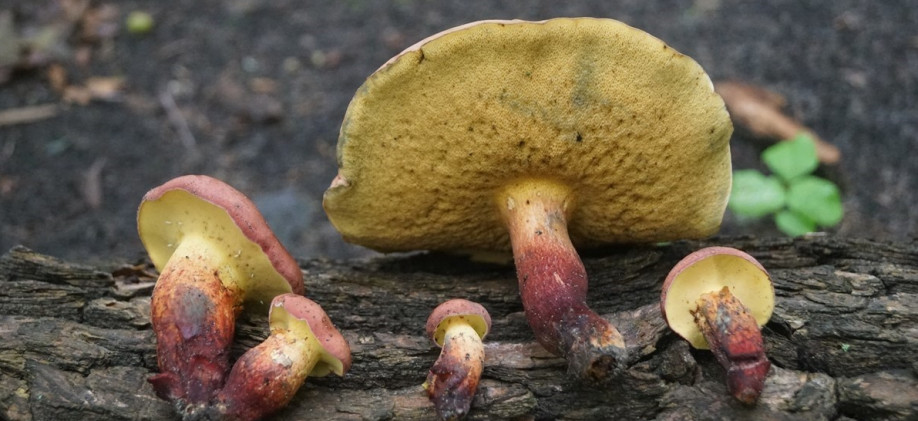
Ornements du pied
Non-reticulate at the apex, or reticulated for a very short distance, bluish when bruised, yellow at the apex, pink-red on the lower two-thirds.
Mycélium basal
Signature chimique
FLESH :
2019: no reaction except towards beige with KOH and NaOH.
2020: towards brownish gray with KOH, NaOH and NH4OH, towards steel gray with FeSO4 and no reaction with phenol and formalin.
CAP-STIPE: towards beige with KOH, NaOH, NH4OH and phenol; towards the gray on the foot with FeSO4 and formalin.
TUBES : towards beige with KOH and NaOH; towards white with phenol and towards gray with FeSO4, NH4OH and formalin.
New tests will be carried out in 2021.
In the fall of 2018, mature specimens were provided to MycoQuébec who identified them as probably old Two-colored Bolete. In 2020, in the same territory located in Shawinigan, Qc., they were abundant. They differ so much from the original description that it is worth illustrating this strain.
Comments
Send a comment
In the fall of 2018, mature specimens were provided to MycoQuébec who identified them as probably old Two-colored Bolete. In 2020, in the same territory located in Shawinigan, Qc., they were abundant. They differ so much from the original description, that it is worth illustrating this strain.
For more informations

















































